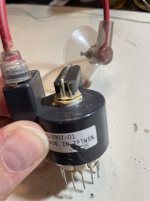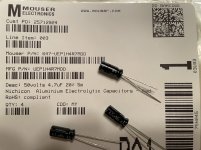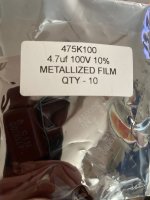aplmak
Experienced Member
Hey there everyone. Wondering if anyone can help me out. My old flyback transformer on a Wyse type terminal.. similar to 50 I would think (It's actually Altos) but they made them for Altos. At any rate the old one the rod on it was snapped.. so it has to be replaced.
I have looked and looked as I know cross reference part numbers do vary from one manufacturer to another. I am getting one today that is P/N 420017-01 REV. B but I see a lot of replacements with P/N 420007-1 listed... My question is this number imperitive.. it appears to be just a manufacturers part number. The second significant number on the unit which are the SAME on both flyback transformers is: E70954 and they are again the same on both. The only numbers that are different is what seems to be the manufacturers part number. The one part 420017-01 looks exactly like the old one except the lead to the wire clip comes out the front of the side.. the other part comes out of the top.. it really doens't make a difference where it is mounted for that. But there is a white wire going from one of the poles to the encapsulated side area exactly the same as the other.
In a nut shell they appear EXACTLY the same.. and the original and the one I am getting today have the same underwriter symbol I think backwards "R" and then "U" and E70954 the only difference is the "07" and "17" ending in the part numbers.....
Any ideas or suggestions???
Most graciously,
Matt
I have looked and looked as I know cross reference part numbers do vary from one manufacturer to another. I am getting one today that is P/N 420017-01 REV. B but I see a lot of replacements with P/N 420007-1 listed... My question is this number imperitive.. it appears to be just a manufacturers part number. The second significant number on the unit which are the SAME on both flyback transformers is: E70954
In a nut shell they appear EXACTLY the same.. and the original and the one I am getting today have the same underwriter symbol I think backwards "R" and then "U" and E70954
Any ideas or suggestions???
Most graciously,
Matt







